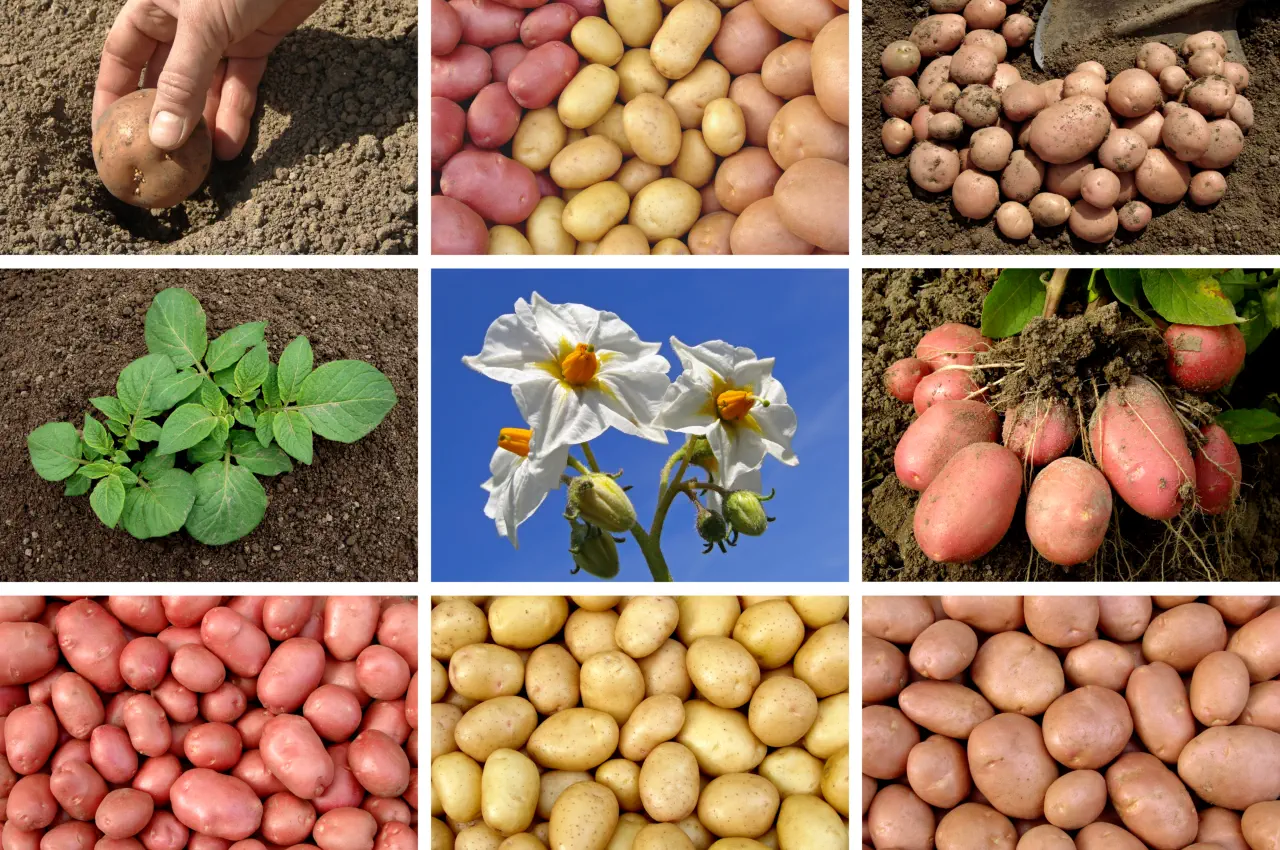Whether you have a big garden, a small patch of yard or a few containers on a balcony, these veggies will fit into your space and your routine.
With a little care and attention you’ll be reaping the rewards of your own mini harvest in no time....

Most gardeners are aware that there are 2 distinct types of tomato plants, cordon and bush. The short bushy varieties that do not need any support and then there are the tall cordon varieties that need to be staked. The shorter varieties are known as “Determinate”, while the taller varieties are known as “Indeterminate”. Potatoes, which are closely related to tomatoes (Solanum family), also fall into 2 similar categories. With potatoes however, the terms most often refer to the plant’s growth habit below ground.
Due to the different growth habits of both types of potatoes, the way you might cultivate them is a little different too, For example, because the tubers of determinate potatoes grow above the seed potatoes and in the top layer of soil, they should be planted at around 10cm deep. Indeterminate potatoes will grow in multiple layers and therefore it’s best to plant the seed potatoes a little deeper at around 12cm deep. The tubers will begin to form at higher levels around the stems and above and adjacent to the seed potatoes.
Determinate potatoes tend to produce a single layer of tubers, which develop just under the surface layer of the soil. Generally, and because they grow close to the surface, it’s best if a mulch is applied around the base of the plants to prevent the tubers from “greening”. Although they don’t really need to be “earthed up” as such, being close to the surface can expose the potatoes to sunlight, causing them to produce chlorophyll, which in turn makes them toxic and unsafe to eat.
The plants are also much shorter than Indeterminate varieties and have sturdier stems. Other distinct differences include their growing time frame. Determinate potatoes produce much earlier crops, some varieties maturing in as little as 65-70 days from planting the seed potatoes. However, not all early potato varieties are classified as Determinate. These fast growing plants are ideal for climates, which may have a short growing season. Another distinguishing factor is the potatoes tend to be smaller than Indeterminate varieties and produce fewer tubers.
Indeterminate potatoes will form tubers at several levels. The tubers will generally be larger than determinate varieties and are much heavier cropping. As the plants grow, soil will need to be drawn up around the stems to encourage the production of more tubers and to protect them from exposure to sunlight. This process of “earthing up” also helps to provide support to the long flimsy stems, which are taller and more prone to collapse than their determinate counterparts.
The growing period for Indeterminate potato varieties is quite long in comparison to Determinate. The full time period from seed potato planting to harvesting is more likely to be around 90-120 days. However, some mid-season varieties will mature at around 70-90 days. Indeterminate potato varieties are well-suited to growing in potato bags and deep containers, where additional soil can be added as the plants grow.
In this specific context, the word “determinate” simply refers to the restricted growth of the plant. For example, a determinate potato variety is restricted to producing tubers in one layer of soil. It simply means it has limitations. The word “Indeterminate” therefore, refers to the exact opposite, meaning there is no limits to the plants growth. It will continue to grow indefinitely, until the end of the growing season. The gardener needs to decide on which type is best for their particular circumstances, especially if space is restricted.
It’s also worth considering the time spent on the cultivation process of both types of potato. The determinate potato grows quickly and needs little attention other than watering and mulching during the growing period. However, in this case less work also means a smaller harvest. Indeterminate potatoes require much more space and more time spent on “earthing up”, or “hilling” as it is sometimes referred to, but the resultant harvest is much more bountiful. Most, but not all maincrop potatoes are Indeterminate.
Unfortunately, most seed potato suppliers don’t tend to list Determinate and Indeterminate potatoes, so you don’t really know which type you are buying. It’s easy to presume that all early potatoes will be Determinate and all maincrop will be Indeterminate but this is not always the case. There are examples of both types in early, second early and maincrop potato varieties. To be sure you know what type you are buying you would need to carry out your own research or contact the seed merchant for advice.
If you have a large enough plot, in which to grow several varieties of potatoes then you can of course experiment with different types to see which one is best for you. If however, your growing space is limited to a few deep tubs, towers or potato bags then you will definitely want to know that you are buying Indeterminate varieties. There are many more choices of Indeterminate potatoes than Determinate options mainly due to the bigger harvest expectations.
Remember if you are going to plant Seed Potatoes - The plants are not hardy, you'll need to provide good frost protection.
Have you got any Potato Growing Tips? Leave a comment below and let& everyone know....
All blog content on this page is copyright of SimplySeed and is not to be reproduced without prior written permission. ©
Very informative, thank you 😁🌱🥔☀️
Really useful post. It's going to make a big difference to how I grow my spuds. Thank you.